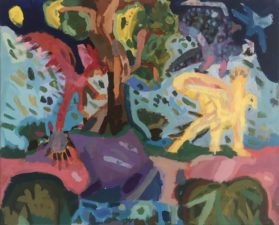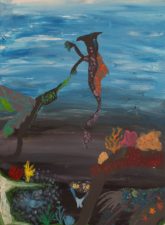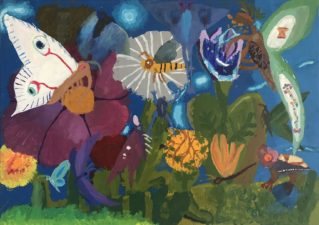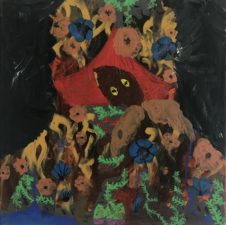The Web3 paradigm has ushered in a new form of understanding the Internet, mainly through the ownership of assets. Cryptocurrencies are one such asset, while NFT art is another asset that makes up some of the most common use cases of the new Web3 paradigm. As such, the still-emerging NFT art gallery ecosystem needs to provide adequate services for the artists using the technology to push the boundaries of what is conceivable as art.
NFT art galleries can do many things for artists. Among those things is exploring ways for artistic collaborations using technology as a medium for interaction and creation. One way is taking advantage of Web3 technologies which have brought the ability to display art through innovative means, such as in the metaverse. In addition to displays, Web3 also enhances digital art in ways that allow artists to become universally recognized as producers of their artwork due to the immutable nature of the blockchain. Also, you have the smart-contract feature that has a double benefit: firstly, it allows artists to get commissions on secondary sales and, secondly, it enables the artists to introduce functionalities that mutate the artwork per specific variables like assets that accompany the wallet, or the number of times the NFT gets transacted.
Commissioning artwork that reflects the NFT art gallery’s values
An NFT art gallery can commission artists to produce artworks so it can exhibit them. This way, the gallery can gain some differentiation from its competition as it looks to become a place that specializes in a concrete type of art, narrative, or technique. NFT art galleries can do this periodically, which is good news for artists who can start to rely on a stable gig. So, if the aesthetics of an NFT artist is a good match with the values of a gallery, then there is room for fruitful collaborations for years to come.
If you are an artist thinking about how to make it in the NFT world, this is a good way of reaching out and making a proposal. See which NFT art galleries match your taste and aesthetics, and see if they are interested in commissioning your artwork for an upcoming show.
Organizing NFT art competitions to discover new artists
Competitions are engaging events that an NFT art gallery can host. They are a fascinating way to allow new talents to emerge and achieve some notoriety while allowing recurrent collectors to discover artists. Due to the nature of the Internet, these NFT art competitions can become quite large if they are popular because, in online settings, there are no geographical limitations, only language barriers and time zone constraints.
NFT artists can look for competitions and sign up for any of them to start getting used to exposing their art on whichever platform or setting they can afford. Who knows, you might get appreciation where you least expect it and start building community. Even if you do not win, you could catch the attention of a collector.
Collaborate with NFT artists to tell a story or convey a theme message
There are days in the calendar that an NFT art gallery might want to use to show an exhibit with a theme message. Like for example, International Women’s Day or Earth Day. These are great occasions for NFT art galleries to collaborate with creators and even fundraise for a cause.
In this way, NFT art galleries can take advantage of any day to associate with the values that day looks to promote. And artists who have a sensibility toward these values should take notice so that they do the outreach they need to do and reach as many people as possible.
Hosting talks and workshops with artists to promote knowledge and collaboration
People tend to look for artists and intellectuals for knowledge and to make sense of a current situation. However, it makes a lot more sense for an NFT art gallery to be a place where these people discuss issues concerning art and culture. In the contemporary world, influential people can say their opinion on social media or via their podcasts, and that can be enough to produce consequences. However, having a place where several artists can contrast their ideas is more aligned with the mission of a gallery.
Sometimes an NFT art gallery does not have enough artists in the pipeline to showcase an exhibit, or sometimes there is a limit to the creativity of an artist. However, there is still some value for everyone involved in hosting a talk, panel, or workshop to promote knowledge about Web3 in the arts sector.
Creating NFT art experiences that combine physical and digital experiences
One of the most unique things an NFT art gallery can do is combine the physical and the digital to create a completely immersive experience for collectors. These experiences are also ways to become different from typical galleries and push the boundaries of art-going experiences. It also permits bringing digital art to the physical world and allowing people to collect it in real-life events.
As tastemakers in the art market, NFT art galleries can be hugely influential to collectors and highly beneficial to artists. To creators, it is all about finding the right fit so that they can start exhibiting their art. For example, SOPRG is an NFT art gallery specializing in NFTs created from paintings produced the old-fashioned way. This way, a collector can own a physical piece of art and its blockchain representation. So, in short, there is space for everyone in Web3. If you are an artist, make sure you do some research into some of the galleries that you feel might be a good fit and what kind of work they do. After all, these kinds of actors provide some real value in the art market.
Painting by Mr. Houska – you can buy the NFTs via our shop.





